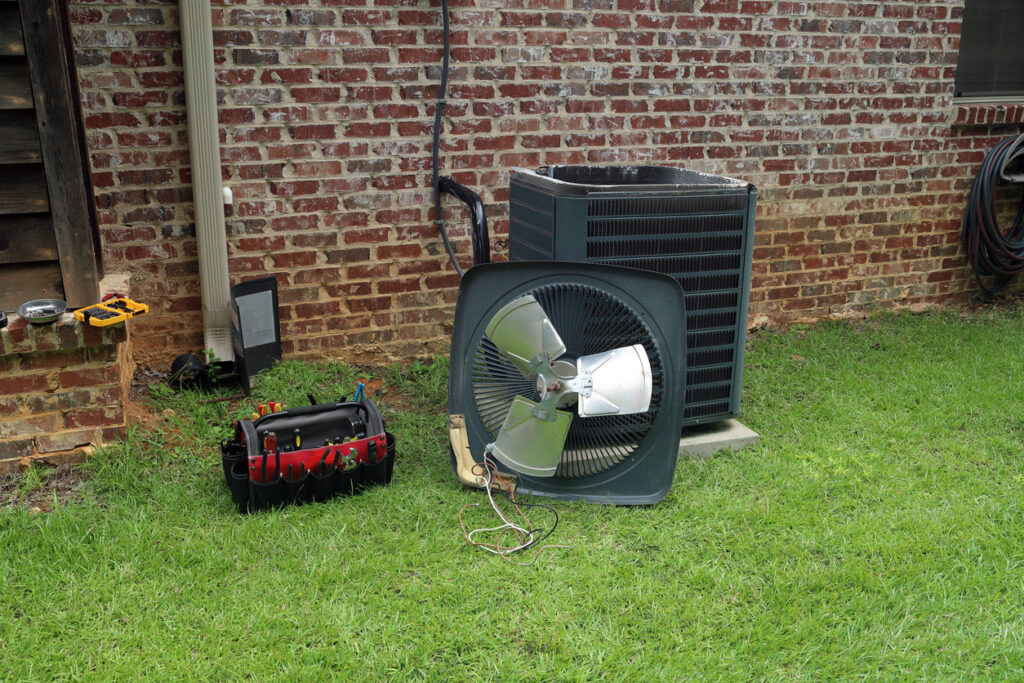An air conditioner is an appliance we see as essential today, but how exactly does it work? The science of air conditioning is a fascinating process.
How Air Conditioners Cool Air
The secret ingredient to your air conditioner is a chemical called refrigerant. Refrigerant is a liquid that absorbs and releases heat. That cool air is then pushed through a network to reach your home’s vents (if you have central AC).
Let’s look more closely at the entire air-chilling process from start to finish.
The Thermostat Triggers Your System to Turn On
When indoor temperatures rise above your thermostat’s “cool” setting, it sends a signal to your AC that it needs to cool air.
Refrigerant Absorbs Heat From the Air
Refrigerant flows through a part of your AC called the evaporator coils. When hot air passes over these coils, the heat is absorbed and released. This preps the cool air for the next step.
The Air Circulates
Your AC’s blower fan rests behind the evaporator coils, ready to deliver chilled air into your home. As it blows, the cool air is pushed past the evaporator coils toward an indoor fan that distributes the air into your home.
Hot Air Is Pushed Outside
At the same time, the refrigerant turns into a gas, which is compressed before it is pulled through a fan connected to your outdoor unit. As it’s pulled outdoors, the refrigerant turns back into a liquid, releasing all of the heat outside.
The Cycle Continues
Your AC repeats the entire cooling process to maintain the desired temperature in your home. Cold air returns to the indoor unit, while hot air is pulled from the house and cycled back outside.
Do All ACs Work the Same Way?
More or less, yes. Even if you don’t have central air conditioning, the entire air-chilling process relies on refrigerant and heat exchange to make your room cool. For example, ductless mini split air conditioners cool a house through heat exchange. They pull hot air in and blow it out, relying on refrigerant lines to cool the air that they draw in.
Humidification vs. Dehumidification: Essential Parts of Cooling
There are two main processes you should know about when it comes to understanding the air conditioning process. Humidification adds moisture to your home’s air, ultimately allowing your system to run more efficiently while dehumidification removes moisture from the air, which can make your home less sticky and more comfortable.
One thing many people don’t realize is that their AC also plays a big role in regulating indoor humidity levels. The ideal range of humidity for a home is 30% to 50%. Levels higher than that can put a strain on your system and even increase the risk of mold.
Air conditioners prevent high humidity levels by ensuring the air stays cool relative to the outdoor temperature. Cool air has less moisture than hot air, so running your AC during the summer can help keep your home’s levels balanced.
Contact Payne Heating and Air in Tallahassee, FL, for professional air conditioning repair services year-round.










